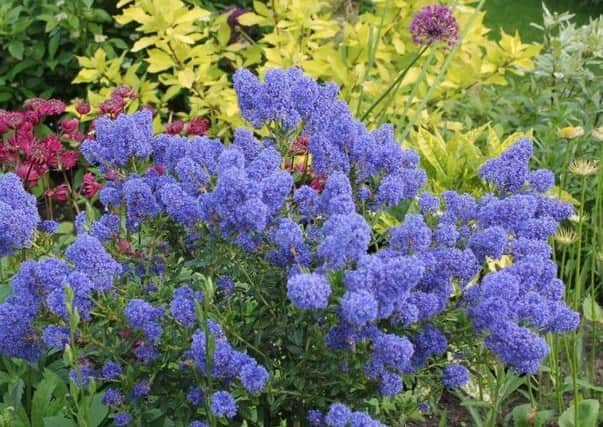GARDENING: A brilliant mass of blue flowers and the peaches and cream of gardening


It’s a similar story when a climbing plant with the same name is seen growing against a wall as summer approaches.
Actinidia kolomikta belongs to the same family as the Chinese gooseberry (Actinidia chinensis), but it is grown for the leaf attraction, rather than edible fruit.
Advertisement
Hide AdAdvertisement
Hide AdIt’s happiest planted at the foot of a sunny wall, where it can reach a height of three to four metres.
On maturity the upper leaves turn bright cream and pink, thus the common name.
Ceanothus and wisteria are two further potential climbing plants to look out for as June arrives.
Ceanothus Concha is grown as a standard tree in this garden, and the flowering buds are about to open, revealing a brilliant mass of blue flowers.
Advertisement
Hide AdAdvertisement
Hide AdCommonly called Californian lilac, these plants are not renowned for hardiness, yet our specimen has seen seven winters, the most recent of which had it struggling for survival. Miraculously, it has survived and is about to celebrate with the best ever display.
Unlike the deciduous varieties, it requires little or no pruning, but clearly enjoys a sunny position.
Dangling racemes of blue wisteria flowers greeted this fellow at a local plant outlet last week.
They were borne on container-grown plants, standing circa one metre high. Spot on time too, as those in our gardens break into bloom.
Advertisement
Hide AdAdvertisement
Hide AdThey’re not cheap to buy, but it’s best not to dwell too long on the price if you want this classy, long-lasting presence in your garden.
Plant in a spot that’s sheltered from the wind, but enjoys full sun, and remain patient until maturity brings the floral displays you desire.
Given the exotic appearance of passion flowers, it’s surprising how well they grow outdoors in this region. Passiflora caerulea is the best choice, and when planted against a south or west-facing wall, can climb seven metres.
It’s difficult not to think of the legendary Biblical connection when examining the flower parts and see an invaluable visual aid for the early missionaries.
Advertisement
Hide AdAdvertisement
Hide AdIf an unsightly building needs covering quickly, Russian or mile-a-minute-vine (Polygonum baldschuanicum) is a reasonable choice. Five metres of growth per year and lots of cream flowers are the good points.
However, regular pruning must enter the equation, and it is also deciduous. Before buying, let alone planting, make sure this is really what you want.